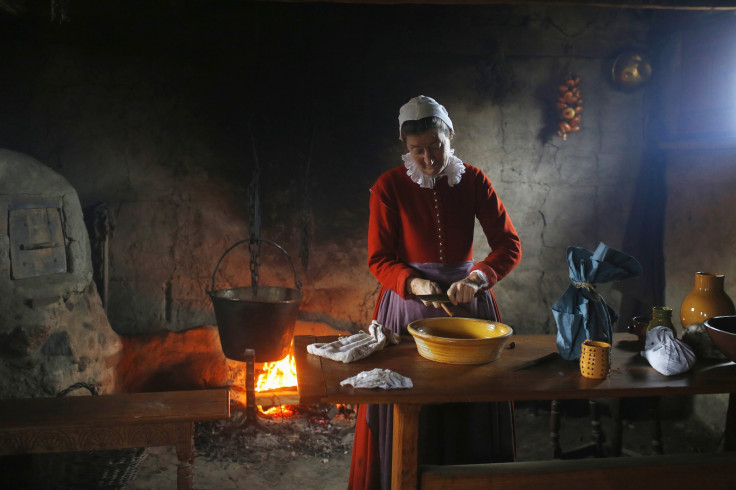When Was The First Thanksgiving Meal Celebrated In America? How The Pilgrims' Feast Became A Holiday

For many families in the U.S., Thanksgiving is an annual tradition that involves roast turkey with stuffing, cranberry sauce, mashed potatoes and pumpkin pie. The holiday was first celebrated in 1621, when newly arrived European Pilgrims and Wampanoag Native Americans gathered for the autumn harvest, according to the History Channel's website.
But the settlers actually didn't celebrate Thanksgiving the next year or any year after. It wasn't really an annual feast until much later, and it only became a national holiday in 1939 thanks to President Franklin D. Roosevelt. Some descendants made a "Forefather's Day" that occurred on Dec. 21 or 22, and several presidents celebrated one-time Thanksgiving holidays, according to Mayflower History.
Did someone say pie? Learn how this dessert became synonymous with #Thanksgiving. https://t.co/trLdHi6PIq
— HISTORY (@HISTORY) November 22, 2015The 1621 feast likely included a good deal of vegetables, including onions, beans, lettuce, spinach, cabbage, carrots, corn and peas. Some fruits – including blueberries, plums, grapes, gooseberries, raspberries and cranberries – were probably also on the menu. But did the first Thanksgiving menu include turkey?
We don’t know for sure that the feast included turkey, but the bird was plentiful in the region and a common food source for both English settlers and the native population, so it’s not unlikely, according to the History Channel. The Pilgrim chronicler Edward Winslow said that the colony’s governor, William Bradford, sent a group of men in search of fowl to prepare for the three-day event. So while turkey may have been on the table, it’s also possible they returned with other types of bird – possibly ducks, geese or swans.
Stuffing at #Thanksgiving is a must. But how does the name of this traditional dish vary across the country?
https://t.co/SBL1EjjQK8
— HISTORY (@HISTORY) November 23, 2015Other foods that were possibly on the menu that might be off-beat today. Winslow wrote that the Native Americans brought along five deer, and culinary historians state that the Thanksgiving meal likely included seafood (Intrigued? Here are some Thanksgiving seafood recipes). Mussels were particularly abundant in New England, and were often served with curds or dairy products. Lobster, bass, clams and oysters might have also been available.
There were no tomatoes – and nope – not even pumpkin pie. Pilgrims and Native Americans ate pumpkins, but they didn’t have the butter or wheat flour necessary for making the crust.
© Copyright IBTimes 2024. All rights reserved.





















